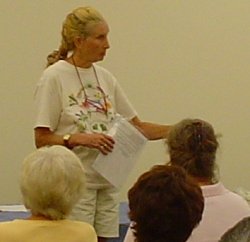Not all fat is the same!
You often hear the term "saturated fat", but what does it mean? Well in simple terms, it means that the atoms are quite dense and that the hydrogen atoms fully join with carbon atoms. In other words, the carbon atoms in the molecular structure are fully saturated with hydrogen atoms.
Different fats contain differing proportions of saturated and unsaturated parts. But there is a pretty accurate way to help us understand which fat is which:
Fats are either solid at room temperature or liquid. Examples of solid or saturated fats are butter, cream, suet, lard, fatty meats and yellow cheeses.
These foods have a very high fat content, which is what makes them so hard. Saturated fat usually comes from animal sources and will be found in all the food products that are made with lard (pig fat), butter, hard margarine, cheese and whole milk, for example, cakes, chocolate, biscuits, pies and pastries.
Saturated fat is the white stuff you see on red meat and it is also found underneath chicken skin.
So in general terms, the thicker more solid fats are the saturated fats.

Unsaturated fats are usually less dense
Liquid fats, such as sunflower oil, olive oil, peanut oil and the whole range of vegetable oils including avocado oil and soya oil, contain more of the essential fats or fatty acids rather than the fully saturated fat. These liquid oils are found naturally in the plants described and the vegetables or plants are pressed in vast quantities in order to extract the oil and provide enough to fill bottles that are on the supermarket shelves.
What are some of the functions of fat?
What is the use of fat in our diets? It can't all be bad! In fact, fat is not all bad. There are a lot of web articles and literature all about the different kinds of fat and which is good for you and which is bad for you. But what they don't often say, is what fat actually does. What is the function of fat?
Firstly, fats help to transport some of the fat-soluble vitamins around the body and take them to where they need to be. For example, some of the fat-soluble vitamins include A, D, E and K. Some of the functions of these fat-soluble vitamins are to:
- Maintain healthy skin.
- Assisting in blood clotting.
- Assist in nerve transmission.
- Assist in the production of hormones.
- Helping with the absorption of vital minerals, such as Vitamin D assists Calcium absorption.
- Fat also provides us with energy.
- Fat also pads and protects vital organs such as the kidneys.
- Fat also provides the body with warmth and insulation.
- Some fats also help carry oxygen around the blood stream to the different parts of the body.
When does being fat help your survival?
Have you noticed that people who live in colder climates, such as the Eskimos of Northern Canada, have on average, quite large amounts of body fat and here's why! It keeps them warm. Having extra fat on your body in very cold temperature helps to insulate the internal organs and stops the body temperature from dropping too low. It helps them to survive. So not all fat is actually bad and sometimes our survival depends on being fat.
This is not the same though for let's say, a city dweller, say in Los Angeles or London, who eats a high amount of carbs and does very little exercise and spends most of their time sitting down in front of a computer or television. If this person puts on lots of extra weight and fat and continues to not exercise and eating unhealthily, then this is not a matter of fat helping this person to survive better. It is a question of personal health choices.

What is fat actually made of ?
Choices about our health are important and when it comes to eating fat, we should be aware of the kinds of fats that are even available. There are plenty of different fats available and here are some of the most usual ones:
Let's have a look and see what fat is actually made of.
All fats contain 2 ingredients: Glycerine and Fatty Acids.
1. Glycerine:
Glycerine or glycerol as it is also called - is basically the energy source of fats. When fat is digested the glycerine is broken down into sugars which are then used by the body for energy. The word 'glycerine' itself comes from the Greek word 'glukeros,' meaning sweet.
2. Fatty acids:
Fatty acids are chains of hydrogen, carbon and oxygen molecules that are found in fats. Saturated fats - or the so-called solid fats - have more hydrogen in them than the liquid fats. As we eat and digest fats, they are broken down into the different fatty acids they contain.
In the same way that fats can be solid or liquid, fatty acids are also saturated or unsaturated. Let's have a look at some examples of these 2 types of fatty acids. Saturated Fatty Acids are mainly found in animal products.
Unsaturated Fatty Acids include monounsaturated fats. These are usually rich in Vitamin E and anti-oxidants and are thought to be some of the heart-healthy fats.
Some 'Healthy' Fats - Monounsaturated Fats
Monounsaturated fats may help to lower the amount of cholesterol in the blood. They are found in both plant and animal products, such as olive oil, peanut oil, and in some plant foods such as avocado.
Food Sources of Monounsaturated Fats
* Peanuts
* Apricot kernel oil
* Mustard oil
* Sesame oil
* Avocados
* A variety of nuts and seeds
* Olive oil & bottled olives
* Peanut oil & peanut butter
* Sunflower oil
* Almonds & Almond oil
* Raw Macadamia Nuts
More 'Healthy Fats' - Polyunsaturated Fats
There is another fat that is typically liquid at room temperature called Polyunsaturated fat and is found in some cooking oils for example safflower, grape seed, sunflower and corn.
Polyunsaturated fats are considered to be some of the 'healthy' fats as they contribute to lower the levels of the so-called 'bad' cholesterol and also help to assist joint and skin health. Polyunsaturated fats are also considered to be some of the heart-healthy fats.
Food Sources of Polyunsaturated Fats
* Mackerel
* Herring
* Trout
* Walnuts
* Sunflower seeds
* Soybean oil
* Corn oil
* Safflower oil
* Salmon

